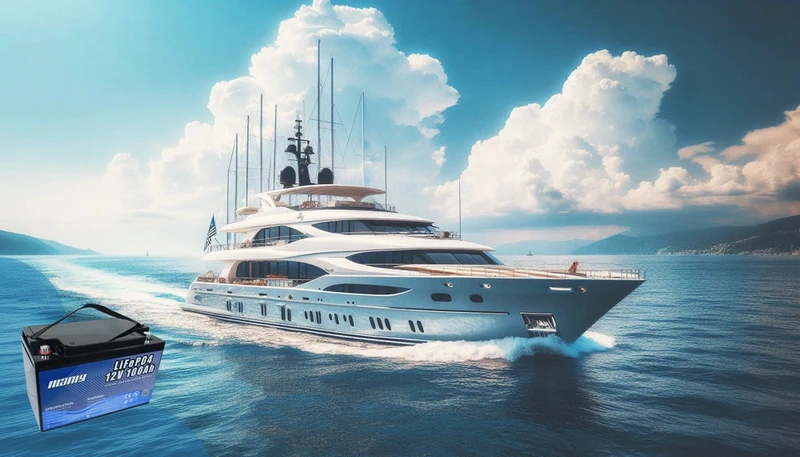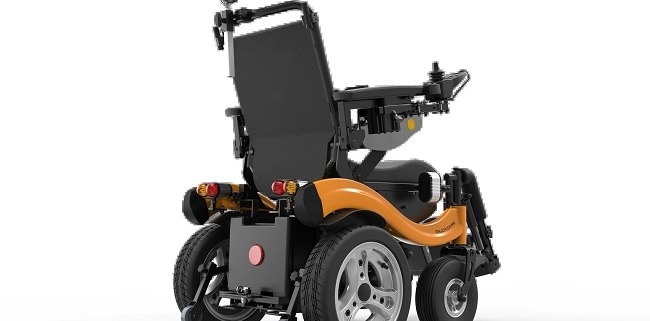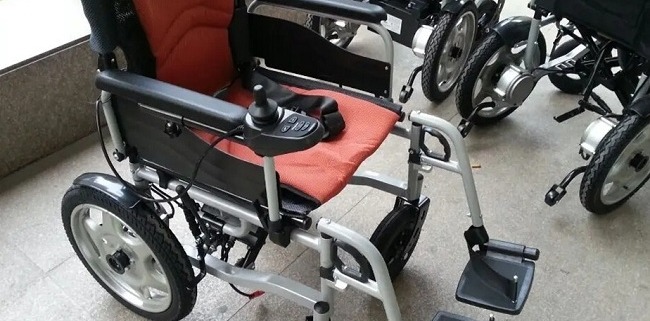Charge a Marine Battery: Step-by-Step Guide
Table of Contents
- Charge a Marine Battery: Step-by-Step Guide
- Understanding Marine Batteries
- Preparing to Charge Your Marine Battery
- Step-by-Step Guide: How to charge a marine battery
- Best Practices for Marine Battery Maintenance
- Conclusion
- FAQ
- Hot Resarch
- Development overview of electric wheelchair
- Benefits of Electric Wheelchairs
- The concept and classification of power tools
Marine batteries are the lifeblood of any boat—they power your engine, lights, gauges, and all the essential onboard electronics. Without a healthy battery, your boat is a pretty shell on the water. In this article, we dive into the burning question: how do I charge a marine battery? We’ll explore everything from the ins and outs of battery types to a step-by-step guide on charging. Plus, we’ll compare the advantages of a marine li ion battery with those of traditional marine deep cycle batteries. Let’s get started on this exciting journey to keep your boat powered and your adventures safe!
Understanding Marine Batteries
1. Types of Marine Batteries
Not all marine batteries are created equal. When it comes to powering your boat, you typically have three choices:
- Starting Batteries: These provide that quick, powerful burst of energy to get your engine running, but they’re not built for long-term power.
- Deep Cycle Batteries: Designed for sustained power delivery, these batteries keep your lights, electronics, and other accessories humming for hours.
- Dual-Purpose Batteries: These offer a blend of starting and deep cycle capabilities, which can be handy on smaller vessels with limited space.
Most boaters prefer marine deep-cycle batteries for extended use and reliability. These batteries handle deep discharges better, ensuring their boats stay powered even during extended trips.
2. Battery Chemistry and Technology
Battery chemistry plays a pivotal role in performance and longevity. Traditional chemistries—like lead-acid, AGM, and gel—have long been the go-to options. However, a modern contender is changing the game: the marine li ion battery.
Why choose a marine li ion battery? Because it’s lightweight, lasts significantly longer, and requires minimal maintenance compared to conventional batteries. Think of it as upgrading from an old clunker to an award-winning sports car in the world of batteries. This cutting-edge technology improves performance and enhances safety and efficiency, making it a popular choice among serious boaters.
Learn more about lithium-ion battery technology on Wikipedia.
Preparing to Charge Your Marine Battery
Before you begin the charging process, a little preparation goes a long way toward ensuring safety and efficiency.
1. Assessing Your Battery’s Condition and Type
First, give your battery a thorough once-over. Check its age, inspect for any signs of corrosion, and verify the battery type. Understanding whether you’re dealing with a marine li ion battery or deep cycle batteries is crucial—it influences which charger to use and how you’ll maintain it. A well-maintained battery lasts longer and performs better when you charge a marine battery.
2. Choosing the Right Charger
Next up is selecting the correct charger. You generally have two main options:
- Onboard Chargers: Permanently installed on your boat, these chargers make it super convenient to power up as long as you have access to a standard outlet.
- Portable Chargers: These allow you to charge your battery wherever you are, which is ideal for smaller boats or when space is at a premium.
Make sure the charger you choose matches your battery’s chemistry and voltage. This step is especially important for those opting for a marine li ion battery or deep cycle batteries—using the wrong charger can lead to underperformance or even damage.
3. Safety Precautions Before Charging
Safety should always be your top priority. Here are some key precautions:
- Work in a Safe Environment: Charge your battery in a well-ventilated area and ensure the temperature is within the manufacturer’s recommended range.
- Clean Battery Terminals: Dirty or corroded terminals can interfere with the charging process, so give them a good clean before you connect anything.
- Gear Up: Wear protective gear such as gloves and eye protection to prevent mishaps.
- Follow Manufacturer Guidelines: Always adhere to the specific recommendations provided by your battery and charger manufacturers.
By taking these simple steps, you will ensure your safety and optimize the performance and lifespan of your battery.
Step-by-Step Guide: How to charge a marine battery
Let’s get into the nitty-gritty of charging your boat’s power source. Follow these steps, and you’ll power up like a pro in no time!
1. Cleaning and Inspecting Battery Terminals
Before you plug anything in, clean your battery terminals. Dirty or corroded terminals can prevent your charger from doing its job, and no one wants a slow charge on a hot day!
- Tip: Mix some baking soda with water, scrub gently with a soft brush, and wipe dry.
- Why It Matters: Clean connections ensure that every bit of energy flows efficiently when you charge a marine battery.
2. Connecting the Charger
Now, let’s hook everything up:
- Positive (Red) Cable: Firmly attach this to the positive terminal.
- Negative (Black) Cable: Connect it securely to the negative terminal.
Double-check your connections, whether using a smart charger that adjusts the current automatically or a trusty manual charger. This step is vital, especially when working with a marine li ion battery or marine deep cycle batteries. Once the cables are locked in, plug in your charger and power it up. Easy as pie, right?
3. Monitoring the Charging Process
Keep an eye on your battery as it charges—this is where modern tech shines:
- LED Indicators: These give you a quick look at the charge level.
- Smart Apps & Timers: Many chargers have apps or built-in timers to let you know when you’re full.
By actively monitoring, you prevent overcharging and ensure your battery gets the right amount of juice.
4. Disconnecting the Charger Safely
When your battery is fully charged, it’s time to disconnect—but do it safely:
- Unplug the Charger: Always start by unplugging the charger from the wall.
- Remove the Negative Cable: Disconnect the black cable first.
- Disconnect the Positive Cable: Finally, remove the red cable.
Following this order helps prevent accidental short-circuits and keeps your battery in shape.
Best Practices for Marine Battery Maintenance
Regular maintenance keeps your battery performing like a champ. Here’s how to keep those power levels up!
1. Maintenance Tips for Prolonging Battery Life
- Routine Inspections: Check for any signs of corrosion or wear on the terminals.
- Clean Regularly: A little cleaning goes a long way in ensuring your connections are solid.
- Water Topping: Top up with distilled water when needed for lead-acid batteries.
By following these habits, you’ll always be ready to charge a marine battery and hit the water confidently.
2. Optimizing Charging Cycles
Different batteries have different needs:
- For a marine li ion battery: Enjoy the benefits of minimal maintenance and the ability to handle deeper discharges.
- For marine deep cycle batteries: Stick to regular, shallow discharges to keep them healthy over the long haul.
Tailoring your charging cycle to the specific battery type maximizes performance and extends lifespan.
3. Troubleshooting Common Issues
Even the best-maintained batteries can run into issues. Watch out for:
- Overcharging: This can overheat your battery and cause damage.
- Undercharging: Leaves your battery underpowered.
- Terminal Corrosion: Hinders efficient energy transfer.
If you notice any problems, check your charger settings and ensure you use the right equipment for your battery type.
Conclusion
1. Recap of Key Points
We’ve broken down how to charge a marine battery step by step—from cleaning and connecting to monitoring and safe disconnection. Each stage is crucial for keeping your boat’s power system in peak condition.
2. Final Tips for Maintaining Both Marine li ion battery and marine deep cycle batteries
Whether you opt for the cutting-edge marine li ion battery or the reliable marine deep cycle batteries, proper care and regular maintenance are your best friends. Tailor your charging habits to your battery’s specific needs, and you’ll enjoy award-winning performance on every trip.
3. Encouragement to Follow Best Practices for Reliability on the Water
Stick to these best practices, and you’ll be cruising with confidence. Keeping your battery in prime condition means fewer hassles and more time enjoying your time on the water. Let’s keep those adventures rolling, shall we?
For more detailed battery care tips and industry insights, check out reputable sources like the U.S. Department of Energy or Wikipedia’s battery technology page. Happy boating!
FAQ
1. Can you charge a marine battery with a regular charger?
While you technically can, it’s not recommended. Marine batteries require a charger that matches their specific chemistry and voltage. A regular charger may not provide the proper charging profile, leading to undercharging, overcharging, or even damage over time.
2. What is the best way to charge a boat battery?
The best way is to use a charger specifically designed for your battery type. Follow a step-by-step process: clean and inspect the terminals, connect the positive and negative cables correctly, monitor the charging process using bright indicators, and disconnect safely when fully charged. This ensures efficiency and longevity.
3.What kind of charger do I need for a marine battery?
You need a charger that is tailored to your battery’s chemistry—whether it’s a marine li ion battery or marine deep cycle batteries. Look for chargers with the correct voltage, charging algorithm, and safety features like automatic shut-off and intelligent monitoring for optimal performance.
Hot Resarch
Marine Battery Battery Manufacturer Lithium Battery
Hello
1. The invention of electric wheelchairs was around the beginning of the 20th century.
2. The United States issued the first patent certificate for electric wheelchair in 1940.
3. Reasons why the early products are not paid much attention: the healing condition of the severely disabled people is not good, and the early products are heavy, low in efficiency, low reliability and other factors.
4. After the Second World War, the number of disabled people in Dajing Niuhuai surged, and the market demand also increased suddenly.
From 5 to 1970s, the stability of the controller was gradually improved, and some special control interfaces were also successfully developed.
6. In the 1980s, due to the microprocessor and the application in the manufacture of the controller, the controllability and stability were greatly improved.
7. In the 1990s, the development of electric wheelchairs was mainly based on the improvement of structural design, including:
1) Various skeletons designed for electric wheelchairs
2) The design of the separation of the seat system and the transmission base
3) Design of transmission wheels in different positions.
Manly, engaged in lithium battery with 13+ years experience, custom electric wheelchair battery available, contact us for more details.
The electric wheelchair is based on the traditional hand-push wheelchair, and is equipped with high-performance power drive device (motor), intelligent control system, battery, electromagnetic brake and other components, and is transformed and upgraded. The electric wheelchair has an artificial intelligence control system, which can make the wheelchair complete various functions such as forward, backward, steering, standing, lying down, etc. through simple operations; the new generation of intelligent electric wheelchair is a modern precision machinery, intelligent numerical control technology, engineering mechanics High-tech products combined with other fields.
Different from traditional electric tricycles, electric vehicles, bicycles and other means of transportation, electric wheelchairs have an intelligent control system. Elderly and disabled people with limited mobility can travel freely as long as they are conscious. In today’s aging society, electric wheelchairs have become an indispensable means of transportation for the elderly and disabled people with limited mobility. Especially in recent years, the rapid development of portable foldable lithium battery electric wheelchairs and portable lithium battery scooters has better satisfied the dreams of the elderly and disabled friends to travel.
Advantages of electric wheelchairs:
1. Wide audience
The elderly are all potential consumers of electric wheelchairs. Compared with traditional wheelchairs, the powerful functions of electric wheelchairs are not only suitable for the elderly and infirm, but also for severely disabled patients. Smooth and safe driving, slow and adjustable speed, and intelligent electromagnetic brakes are the unique advantages of electric wheelchairs. All safety settings and smart devices of electric wheelchairs are specially designed for the elderly and disabled;
2. Convenience
The traditional hand-push wheelchair must rely on manpower to move forward. If there is no one around to take care of it, it is very difficult to travel alone. The electric wheelchair is different. The elderly and disabled people with limited mobility can drive the electric wheelchair to travel by themselves, which greatly improves the mobility of the disabled. Self-care ability, expanding their scope of action and communication circle, are of great benefit to their mental and physical health;
3. Environmental protection
Electric wheelchair adopts electric drive, zero emission, no pollution, and the most environmentally friendly;
4. Safety
The electric wheelchair control technology is very mature, and the brake equipment on the body can only be mass-produced after being tested and qualified by professional equipment for many times. The probability of losing control of the electric wheelchair is close to zero; the equipment such as slow speed, anti-backward tilting device, universal drive, intelligent electromagnetic brake, etc., ensures that the electric wheelchair does not roll over or roll backwards and other safety hazards;
5. Enhance self-care ability
Use an electric wheelchair to enhance self-care ability. Shopping for groceries, visiting parks, supermarkets, traveling, and other things that used to be served by others, can be done by yourself with an electric wheelchair. It not only saves the cost of care and labor, but also better realizes their life value. Their psychology no longer feels that it is the “drag” of their family members, and their mood will be more comfortable!
The concept and classification of power tools:
A tool that is held and operated by hand, uses a low-power motor or electromagnet as a power, and drives the work head through a transmission mechanism is called a power tool.
Its classification is generally divided into three categories according to the corresponding working materials: masonry tools, metalworking tools, and woodworking tools. With the popularity of power tools and the increase of cross-work types, many tools no longer simply work on one material, but are generally marked with their most important and common working conditions.
Some notes for power tools:
1. The main safety protection is required during the use of power tools. Safety protection includes: goggles, helmets, masks (gas masks), earplugs, gloves (wire type gloves are not allowed for rotating tools), protective clothing, insulating shoes, etc. And before using the tool, read the product manual or use it under the guidance of skilled workers. Unless otherwise specified, power tools require two-hand operation.
2. Hand-held power tools (Class II power tools) have double insulation protection, namely basic insulation and reinforced insulation, which are represented by the word “back”. During the working process, keep the power cord intact, otherwise there will be danger of leakage. Do not use in damp, underwater, flammable and explosive places.
3. The electric tool uses a series motor as the motor, and the motor consists of a rotor, a stator and a carbon brush. It is easy to cause the motor to burn out under overload conditions.
Manly Battery Co.,Ltd specializes in providing energy storage power, UPS backup power, power supply and new energy system solutions and operation and maintenance services for new energy, electric wheels, smart energy storage and green power applications. Among them, the field of network energy mainly includes communications, power, data centers, financial securities, rail transit, etc.; the field of smart energy storage mainly includes household energy storage, industrial and commercial energy storage, and microgrid energy storage systems; the field of green power mainly includes forklifts, low-speed electric vehicles, off-road vehicles, etc. At present, the main products are lithium-ion batteries and systems, lead-acid battery replacement lithium batteries and systems, and new energy system integration products and services. Please contact:
[email protected]






